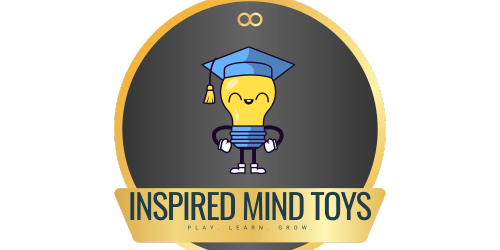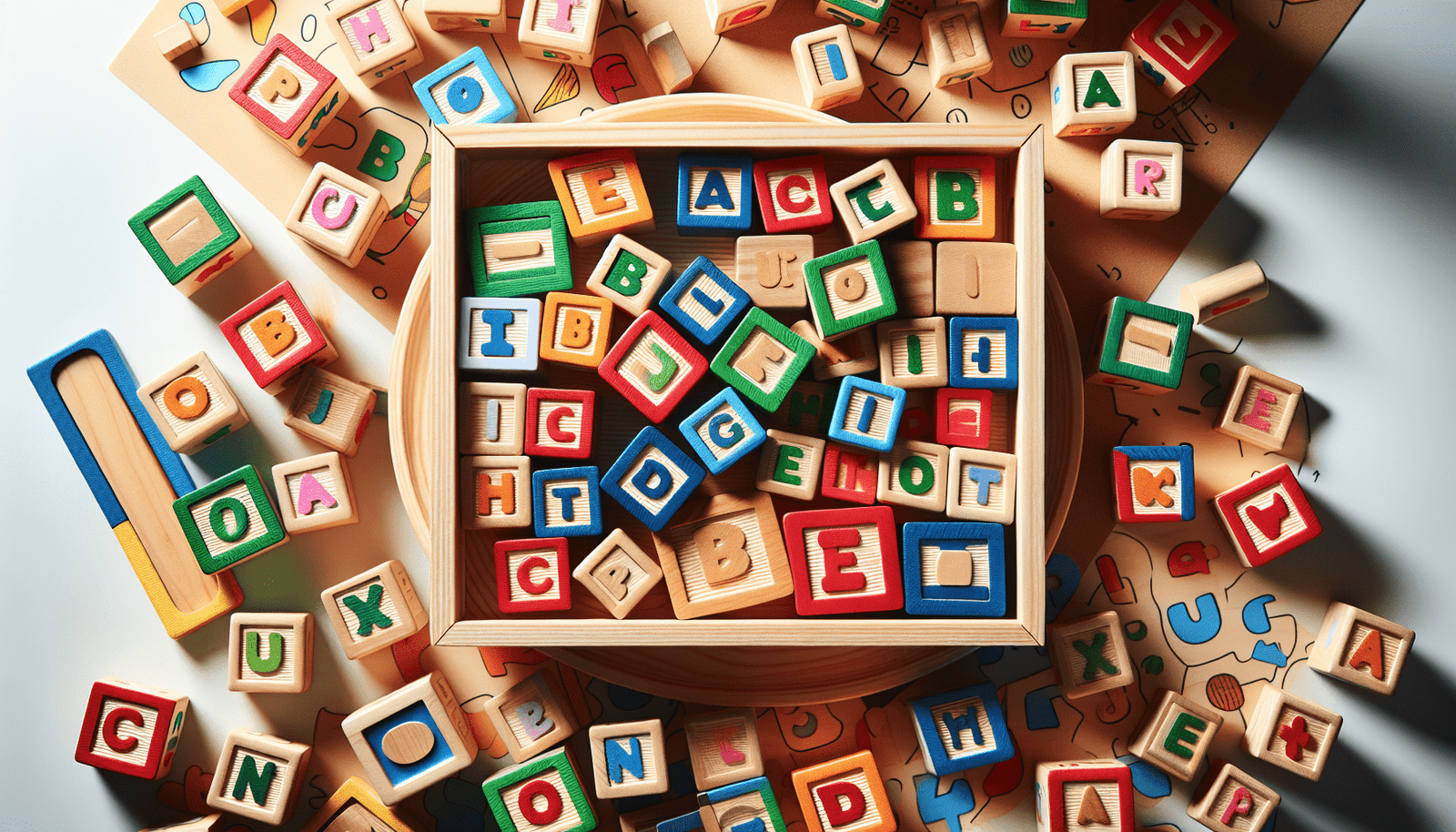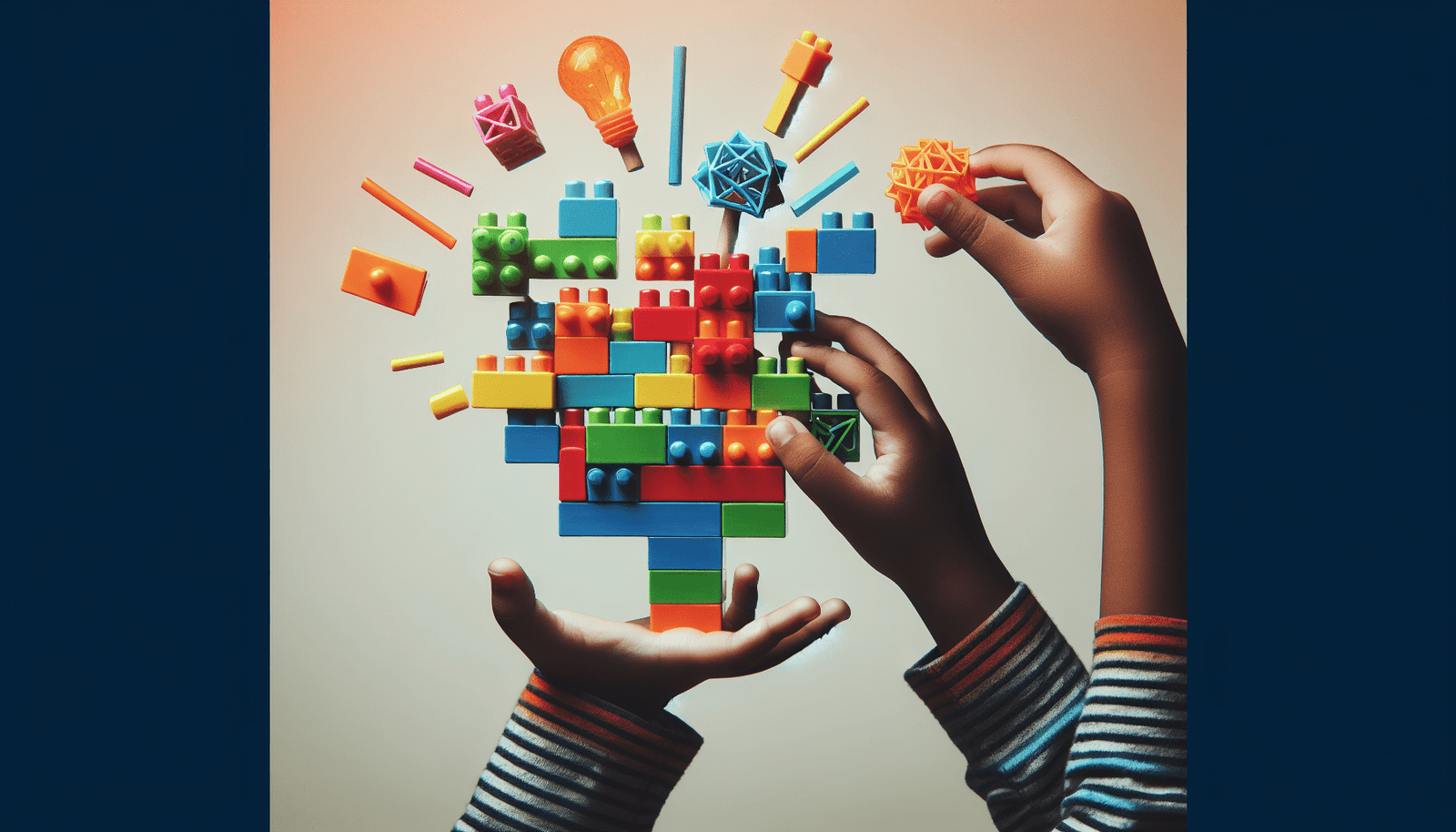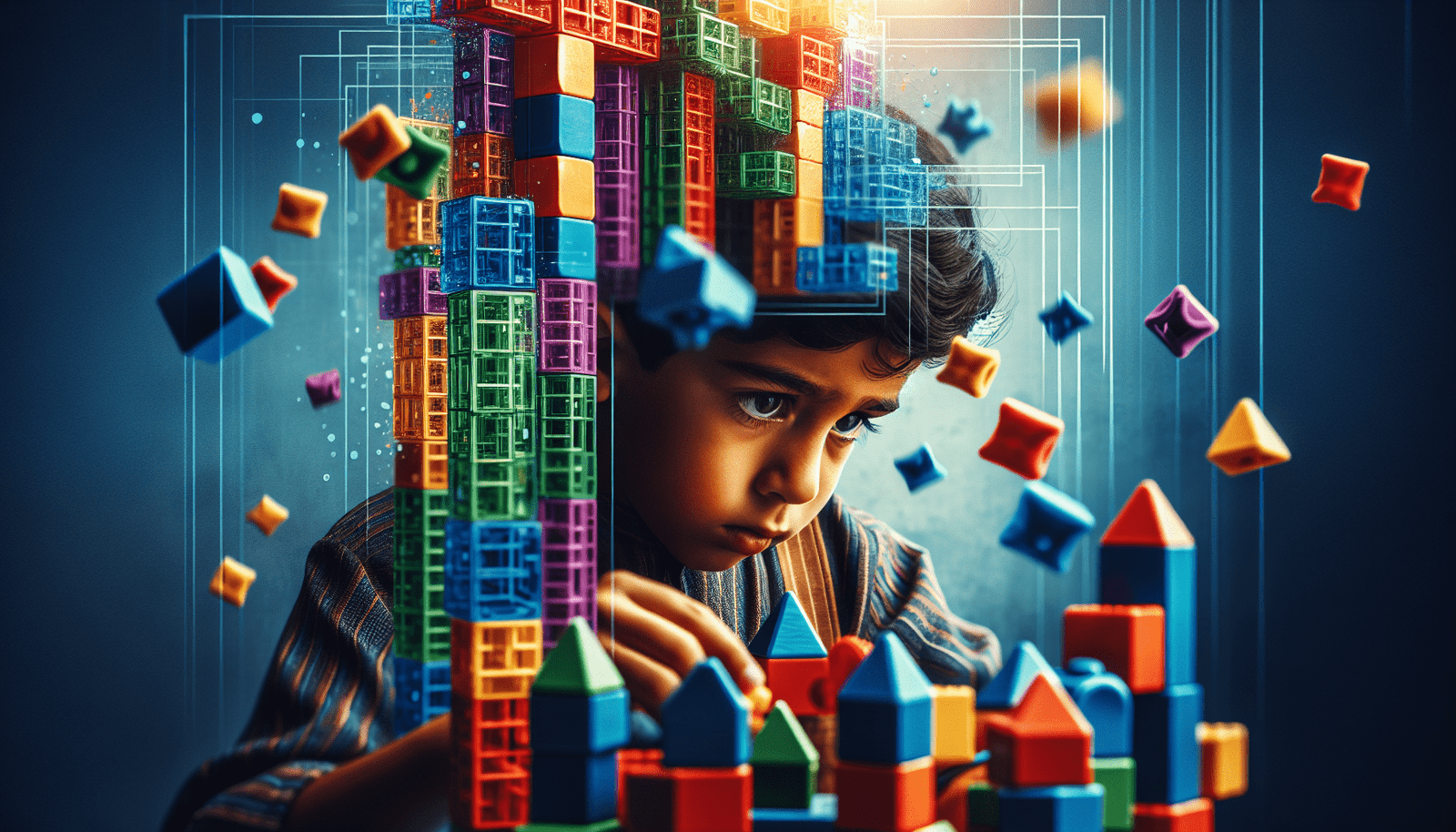Are you a parent or educator looking for ways to enhance your child’s language skills through play? Look no further! In this article, we will explore the world of educational toys that promote language development. From interactive games to storytelling sets, these toys are designed to engage children in fun and educational activities while boosting their vocabulary, communication, and literacy skills. Whether your child is just starting to babble or already forming complex sentences, these toys provide a valuable learning experience. So, let’s dive in and discover the exciting world of educational toys that can help your child become a confident communicator.
Educational Toys That Promote Language Development
Understanding the Importance of Language Development Toys
Language development is a crucial aspect of a child’s growth and learning. It not only plays a significant role in communication but also in cognitive development. Language development toys can greatly aid in fostering early language skills, facilitating communication and expression, and enhancing cognitive abilities.
Encourages early language skills
Language development toys are designed to engage children and encourage the development of their early language skills. These toys provide kids with the opportunity to explore different sounds, words, and concepts, thereby expanding their vocabulary. Through interactive play, children can learn to recognize and associate words with objects, actions, and emotions. This early exposure to language helps lay a solid foundation for further language development.
Facilitates communication and expression
Toys that promote language development also work to enhance children’s communication and expression skills. By interacting with these toys, children learn to articulate their thoughts, feelings, and ideas. They develop the ability to express themselves effectively, both verbally and non-verbally. These toys encourage children to engage in conversations, ask questions, and share their experiences, ultimately improving their overall communication skills.
Enhances cognitive skills
Language development toys not only foster language skills but also promote cognitive development in children. These toys often require problem-solving, critical thinking, and memory skills. For example, puzzles and word games can help enhance a child’s cognitive abilities by challenging their reasoning and memory recall. Through play, children improve their ability to focus, analyze information, and make connections, ultimately boosting their cognitive development.
Choosing Age-Appropriate Language Development Toys
When selecting language development toys for children, it is essential to consider their age and developmental stage. Different age groups require toys that are specifically designed to meet their learning needs and capabilities.
Infant language development toys
For infants, language development toys focus on stimulating their sensory experiences. Toys such as rattles, soft books, and musical mobiles engage their senses of touch, sight, and hearing. These toys introduce infants to different textures, colors, and sounds, helping to foster their early language skills.
Toddler language development toys
Toddlers benefit from toys that encourage exploration, imaginative play, and story-telling. Building blocks, shape sorters, and pretend play sets are great for promoting language skills in this age group. These toys allow toddlers to engage in role-play, expand their vocabulary, and enhance their ability to follow simple directions.
Pre-schooler language development toys
For pre-schoolers, language development toys focus on expanding their language skills further. Interactive books, board games, and learning tablets provide opportunities for children to engage in reading, problem-solving, and language-based activities. These toys support pre-schoolers in developing their vocabulary, comprehension, and communication skills.
Interactive Books for Language Stimulation
Interactive books play a crucial role in language stimulation for children. They offer a multisensory experience that engages children and encourages active participation in the reading process.
The benefits of interactive books
Interactive books provide numerous benefits for children’s language development. These books often have features such as flaps to lift, textures to touch, and sounds to hear, which make reading more interactive and engaging. This interactivity helps children stay invested in the story, improving their attention span and concentration. Interactive books also promote language skills by encouraging children to actively participate in the narrative, ask questions, and make connections between the text and illustrations.
Choosing an interactive book
When choosing an interactive book, it is important to consider the age appropriateness, content, and level of interactivity. Younger children may benefit more from books with simple interactive elements like touch-and-feel textures, while older children can engage with more complex interactive features such as pop-ups and pull tabs. Look for books with clear and vibrant illustrations, interesting and relatable stories, and interactive elements that align with the child’s developmental stage.
Popular interactive book recommendations
Some popular interactive book recommendations for different age groups include:
- “Where’s Spot?” by Eric Hill (infants and toddlers)
- “Dear Zoo” by Rod Campbell (toddlers)
- “Press Here” by Hervé Tullet (pre-schoolers)
- “The Gruffalo” by Julia Donaldson (pre-schoolers)
These books not only provide interactive elements but also introduce children to rich vocabulary, storytelling, and imaginative worlds.
Building Blocks for Language Foundation
Building blocks are not only great for constructing physical structures but also for building a strong language foundation in children. These versatile toys offer a wide range of opportunities for language learning and development.
Benefits of building blocks for language learning
Building blocks promote language learning in various ways. When children play with blocks, they often engage in imaginative play, creating stories and scenarios that involve different objects and characters. This imaginative play encourages language development as children narrate their play scenarios, describe the actions of the characters, and solve problems within their imaginary world. Manipulating and arranging blocks also helps develop spatial awareness and introduces concepts such as size, shape, and quantity.
What to look for in language development blocks
When choosing building blocks for language development, consider their size, material, and versatility. Larger blocks are ideal for younger children as they are easier to handle and stack. Blocks made of non-toxic materials like wood or plastic ensure safety during play. Look for blocks that come with images or letters on them, as they can enhance vocabulary acquisition and letter recognition. Additionally, blocks that can be combined to create diverse structures and incorporate other elements like numbers or shapes offer more opportunities for language learning.
Tips for using blocks to enhance language skills
To maximize the language learning potential of building blocks, consider the following tips:
Encourage conversation: Engage children in conversations while playing with blocks. Ask open-ended questions about what they are building, why they made certain choices, and how they plan to solve design challenges.
Expand vocabulary: Introduce new words related to size, shape, quantity, and colors while playing with blocks. Describe different block structures, encourage children to name the colors they are using, and compare the sizes and shapes of the blocks.
Storytelling opportunities: Encourage children to create narratives and stories around their block structures. This helps develop their storytelling skills and encourages language fluency.
Collaborative play: Encourage children to work together and collaborate when building with blocks. This fosters communication, negotiation, and teamwork skills while expanding their vocabulary through the exchange of ideas and problem-solving.
By incorporating these strategies, building blocks can become powerful tools for promoting language development in children.
Language Development Board Games
Board games have long been recognized for their ability to entertain and bring people together. However, they also play a significant role in aiding language development in children.
How board games aid language development
Board games provide numerous opportunities for language development. They require children to communicate with others, listen actively, and follow instructions. Through gameplay, children practice their turn-taking skills, expand their vocabulary, and learn to express themselves effectively. Board games also encourage critical thinking, problem-solving, and the ability to strategize, all of which contribute to cognitive development.
Selection of ideal board games for different ages
When choosing board games for language development, it is important to select ones that are suitable for the child’s age and abilities. Here are some recommended board games for different ages:
Candy Land (3+ years): This classic game helps younger children learn colors and practice their counting skills while engaging in imaginative play.
Sequence for Kids (3+ years): This game combines strategy and matching skills while promoting language development through simple instructions and turn-taking.
Scrabble Junior (5+ years): This variation of the popular word game introduces basic spelling and encourages children to form words using picture clues.
Apples to Apples Junior (7+ years): This game promotes vocabulary acquisition and storytelling skills as players match words and create funny comparisons.
Recommended language development board games
In addition to the aforementioned games, some other popular language development board games include:
“Spot It! Alphabet” (4+ years): This game focuses on letter recognition and visual perception skills, making it a fun and educational choice for children learning to identify letters.
“Story Cubes” (6+ years): This creative storytelling game enhances language fluency and imaginative thinking as players use dice with images to generate story ideas.
“Bananagrams” (7+ years): This fast-paced game promotes spelling, vocabulary, and critical thinking skills as players race to build their own crossword grids.
By incorporating board games into playtime, parents and educators can create enjoyable experiences while promoting valuable language development skills in children.
Learning Tablets for Interactive Language Development
Learning tablets have become increasingly popular in recent years, and their interactive nature makes them an excellent tool for language development.
Why learning tablets are beneficial
Learning tablets offer various benefits for language development:
Interactive learning: Learning tablets provide interactive experiences that engage children through visual and auditory stimuli. They often include games, quizzes, and educational apps designed to enhance language skills through engaging activities.
Individualized learning: Learning tablets allow children to learn at their own pace and level. Many apps on these devices provide personalized feedback and adaptive learning experiences, tailoring content to the child’s specific needs and abilities.
Portability and convenience: Learning tablets are portable and lightweight, making them easy to carry and use in different settings. This portability allows children to engage in language learning activities wherever they go, encouraging continuous practice and reinforcement of language skills.
Factors to consider when purchasing a learning tablet
When selecting a learning tablet for language development, consider the following factors:
Age appropriateness: Ensure that the tablet is suitable for your child’s age range. Younger children may require tablets with simpler interfaces and pre-loaded educational apps specifically designed for their developmental stage.
Educational content: Look for tablets that offer a wide range of educational apps and games that focus on language development. These apps should be interactive, engaging, and align with your child’s current language skills.
Parental controls: Check for tablets that come with robust parental control features. These features allow parents to monitor and restrict access to certain apps or websites, ensuring age-appropriate content and a safe online environment for their child.
Durability: Young children can be prone to accidental drops or spills. Consider a tablet with sturdy construction, protective cases, and screens that are resistant to scratches or damage.
Top tablet recommendations for language development
Some popular learning tablets that promote language development include:
LeapFrog LeapPad Academy Tablet: This tablet is specifically designed for children aged 3-8 years and comes with a variety of educational apps that focus on language skills, reading, and math.
Amazon Fire Kids Edition Tablet: Designed for children aged 3-12 years, this tablet includes a one-year subscription to Amazon FreeTime Unlimited, providing access to thousands of age-appropriate apps, books, videos, and games.
VTech Little Apps Tablet: Suitable for children aged 2-5 years, this tablet offers interactive activities that teach letters, numbers, and basic vocabulary through engaging games and quizzes.
By incorporating learning tablets into their child’s educational routines, parents can provide an interactive and engaging platform for language development.
Educational Puzzles that Encourage Linguistic Growth
Puzzles are not only a fun pastime but also a powerful tool for promoting linguistic growth in children. They offer opportunities for problem-solving, critical thinking, and language association.
Puzzle playing and language connections
Playing with puzzles promotes language development in several ways:
Vocabulary expansion: Puzzles often feature images of common objects, animals, and scenes. As children piece the puzzle together, they can learn and reinforce vocabulary by identifying and naming the objects in the pictures.
Problem-solving skills: Puzzles require children to observe, analyze, and figure out how different pieces fit together to complete the picture. This process enhances their problem-solving abilities and encourages critical thinking.
Storytelling and narrative skills: Once the puzzle is completed, children can create stories and narratives based on the scene depicted. This imaginative play helps develop their storytelling skills and encourages language fluency.
Category of puzzles suited for language advancement
There are various types of puzzles that can contribute to language advancement. Some of the most beneficial types include:
Picture puzzles: These puzzles feature images that children have to assemble, promoting vocabulary acquisition and visual-spatial skills.
Alphabet puzzles: These puzzles focus on letter recognition, phonics, and basic spelling by encouraging children to match letters with corresponding objects or images.
Jigsaw puzzles: These puzzles challenge children to assemble interlocking pieces to complete a larger picture. They enhance problem-solving and cognitive skills while offering opportunities for vocabulary expansion.
Story puzzles: These puzzles depict different scenes from popular children’s stories or fairy tales. They facilitate storytelling, comprehension, and imaginative play.
Best educational puzzles for children
Some popular educational puzzles that encourage linguistic growth include:
“Melissa & Doug Farm Wooden Chunky Puzzle” (2+ years): This puzzle features large, easy-to-grasp pieces depicting different farm animals. It helps develop vocabulary, fine motor skills, and problem-solving abilities.
“Ravensburger Disney Princess 3-Pack Jigsaw Puzzles” (4+ years): This set of jigsaw puzzles features beloved Disney princesses and their iconic scenes. It promotes problem-solving, cognitive skills, and storytelling through familiar characters.
“eeBoo Alphabet & Numbers Puzzle Pairs” (5+ years): This puzzle set focuses on letter and number recognition. It encourages language skills, matching abilities, and numerical concepts.
By incorporating educational puzzles into playtime, parents can provide children with a fun and engaging way to enhance their linguistic growth.
Language Development through Role-Play Toys
Role-play toys can play a vital role in fostering language development in children. These toys encourage imagination, creativity, and social interaction while building language skills.
Role of role-play toys in language skills
Role-play toys, such as play kitchens, doctor’s kits, or dollhouses, offer endless possibilities for children to engage in imaginative and pretend play. Through role-play, children can experiment with different roles, scenarios, and conversations. This form of play allows them to practice and refine their language skills, including vocabulary, sentence structure, and social interactions.
By assuming various roles and engaging in pretend conversations, children have the opportunity to express themselves, expand their vocabulary, and develop an understanding of different perspectives.
Selecting role-play toys for linguistic growth
When selecting role-play toys, it is important to choose ones that align with a child’s interests and age. Consider toys that encourage storytelling, imaginative play, and social interaction. Here are a few examples of role-play toys that promote language development:
Play kitchen: This toy enables children to imitate adult cooking and meal preparation. Through pretend play, children can learn new words related to food, cooking utensils, and kitchen activities, while also developing communication and vocabulary skills.
Doctor’s kit: This toy allows children to take on the role of a doctor or nurse, fostering language development through pretend medical examinations, patient interactions, and medical vocabulary.
Dollhouse: Dollhouses provide children with opportunities for storytelling, role-playing, and social interaction. By engaging in conversations between dolls and creating imaginative scenarios, children can enhance their language skills.
Puppet theater: Puppet theaters encourage storytelling and dramatic play. Children can use puppets to create characters, act out scenes, and engage in dialogue, promoting their language fluency and communication skills.
Most effective role-play educational toys
Some popular role-play educational toys that aid in language development include:
“KidKraft Ultimate Corner Play Kitchen”: This play kitchen comes with realistic features, providing children with a realistic role-playing experience and ample opportunities for language development.
“Fisher-Price Medical Kit”: This doctor’s kit includes various medical tools and encourages children to engage in imaginative play, fostering their language skills and understanding of the medical field.
“Melissa & Doug Fold & Go Wooden Dollhouse”: This portable dollhouse offers multiple rooms for imaginative play and storytelling, allowing children to enhance their language skills through role-playing and social interaction.
“Melissa & Doug Deluxe Puppet Theater”: This puppet theater enables children to put on their own puppet shows, promoting creative expression and enhancing communication skills through storytelling.
By providing children with role-play toys, parents and educators can facilitate language development in a fun and interactive way.
Utilizing Dolls and Plush Toys for Language Skill Development
Dolls and plush toys can be valuable tools for language skill development in children. These toys offer companionship, emotional support, and countless opportunities for language learning.
Effectiveness of dolls and plush toys in language learning
Dolls and plush toys provide children with a sense of comfort and security, while also serving as conversation partners. Through interactions with these toys, children can practice their communication skills, develop empathy, and expand their vocabulary. Dolls and plush toys encourage children to express themselves, engage in pretend play, and even create their own stories and dialogues.
These toys can be especially helpful for children who may be hesitant or shy in expressing themselves verbally. They provide a non-judgmental and accepting environment in which children can freely explore and develop their language skills.
Choosing dolls and plush toys for language development
When selecting dolls and plush toys for language development, consider the following factors:
Size and material: Choose dolls and plush toys that are appropriate for the child’s age group. Ensure that they are made of safe, non-toxic materials and are easy to handle and cuddle.
Diversity and representation: Look for dolls and plush toys that reflect diverse cultures, races, and genders. These toys can foster inclusivity and encourage children to develop an appreciation for diversity.
Talkative dolls or interactive toys: Some dolls and plush toys come with features that allow them to speak or respond to certain interactions. These toys can stimulate conversations and engage children in dialogue, enhancing their language skills.
Emotional expression: Consider dolls and plush toys that display a range of emotions. This allows children to practice empathy, recognize different emotions, and communicate their feelings through play.
Using dolls and plush toys for optimal language benefits
To maximize the language benefits of dolls and plush toys, consider the following tips:
Role-playing opportunities: Encourage children to engage in imaginative play and role-play with their dolls or plush toys. Provide props, such as miniature furniture or clothing, to enhance the play experience. This role-playing can facilitate conversations, storytelling, and language acquisition.
Storytelling and narrative creation: Encourage children to create stories or scenarios involving their dolls or plush toys. Prompt them with questions about the characters, their actions, and the emotions they might be experiencing. This storytelling exercise promotes language fluency and creativity.
Conversations and dialogues: Encourage children to talk to their dolls or plush toys as if they were having real conversations. Ask open-ended questions to prompt deeper thinking and encourage children to respond and articulate their thoughts.
Emotional expression and empathy: Encourage children to express their emotions through their dolls or plush toys. They can imitate expressions, describe feelings, and practice empathy by understanding how their toys might be feeling.
By leveraging the potential of dolls and plush toys, parents and educators can create a nurturing and language-rich environment for children’s development.
Brain-boosting Word Games for Children
Word games are fantastic tools for spurring language development and expanding vocabulary in children. They engage children in playful learning experiences while building their linguistic abilities and critical thinking skills.
Importance of word games in language development
Word games contribute to language development in several ways:
Vocabulary acquisition: Word games expose children to new words, allowing them to expand their vocabulary. They encourage children to search for word meanings, make connections, and apply their knowledge in context, thereby enhancing their language proficiency.
Phonics and spelling skills: Many word games involve the manipulation and arrangement of letters to create words. These games help children practice their phonics skills and reinforce their understanding of spelling patterns and rules.
Critical and strategic thinking: Word games often require children to think strategically, make connections between letters, and select the most appropriate words. This enhances their critical thinking abilities, problem-solving skills, and fosters creativity.
Types of word games for language development
There are numerous types of word games that can benefit language development in children:
Word puzzles: Crossword puzzles or word searches challenge children to find and decode words in a grid of letters. These games promote vocabulary recall, spelling, and letter recognition.
Word scavenger hunts: Scavenger hunts that involve finding objects or pictures associated with specific words can improve vocabulary acquisition and word-object association.
Rhyme games: Rhyme games encourage children to identify and generate words that rhyme. This builds phonetic awareness and strengthens sound-symbol correspondence.
Word association: Games such as “Word Association” or “I Spy” prompt children to think of words related to given prompts or objects. These games foster word recall, creativity, and strengthen semantic connections.
Recommended word games
Here are some popular word games that promote language development in children:
“Scrabble Junior”: This game introduces younger children to word building and spelling. Players match letter tiles to create words on a gameboard, enhancing letter recognition, vocabulary, and strategic thinking.
“Boggle Junior”: This variation of the classic Boggle game is designed for younger children. It encourages them to match letters and form words, while also developing vocabulary, fine motor skills, and visual perception.
“Mad Libs”: This game involves fill-in-the-blank stories where players provide different parts of speech to complete the narrative. It helps children learn about grammar, sentence structure, and creative storytelling.
“Apples to Apples”: This word game prompts players to match nouns with descriptive adjective cards. It promotes vocabulary expansion, word association, and critical thinking through comparing and contrasting different words.
By introducing word games into playtime, parents and educators can make language development both enjoyable and educational for children.
Interested in seeing the products we use?
Check out our carefully crafted list of items









